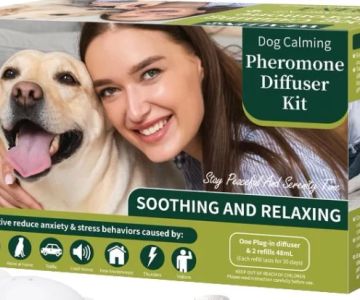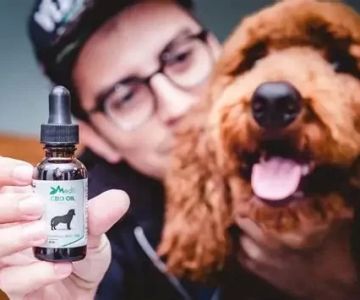1. Understanding Pet Anxiety and Its Triggers
Recognizing the signs of anxiety
Just like humans, pets can experience stress and anxiety. Whether it’s from loud noises, new environments, or separation from their owners, anxiety manifests differently across animals. Dogs might pace, pant, or bark excessively, while cats could hide, overgroom, or refuse to eat. Understanding these behaviors is the first step toward creating a calm, supportive space for them.
Common causes of anxiety in pets
Triggers vary by species and personality. For dogs, thunderstorms, fireworks, or being left alone can cause panic. Cats often become anxious due to territorial changes or new people in the house. Even subtle factors like strong smells or rearranged furniture can unsettle sensitive pets. Identifying what sparks your pet’s discomfort helps tailor your approach effectively.
2. Setting Up a Safe and Soothing Space
Designing a comfort zone
Every anxious pet benefits from a designated area where they feel secure. Choose a quiet, low-traffic room and equip it with familiar items—your pet’s bed, favorite toys, and perhaps a blanket that smells like you. This space should act as their sanctuary, where they can retreat and decompress whenever stress levels rise.
Control light and sound
Soft lighting or natural daylight is ideal. Avoid harsh artificial lights that can overstimulate nervous pets. White noise machines or calming music—especially those designed for animals—can mask external noises like traffic or fireworks, creating a soothing background atmosphere.
Consistency is key
Pets thrive on routine. Feeding, walks, and playtime should follow a predictable schedule to reduce uncertainty. Maintaining familiar scents and furniture arrangements also helps keep pets grounded, especially during times of change.
3. Using Scent and Sound Therapy for Relaxation
The power of smell
Calming scents can work wonders for anxious animals. Lavender and chamomile are widely recognized for their relaxing effects, but always use pet-safe diffusers or sprays to avoid overwhelming their sensitive noses. Avoid strong essential oils unless approved by a veterinarian.
Music therapy for pets
Soft classical music or low-frequency sounds can reduce heart rate and anxiety levels in both cats and dogs. Some playlists are specifically designed for pets—try them during thunderstorms, travel, or vet visits to help your furry companion stay composed.
4. Behavioral Techniques and Positive Reinforcement
Encourage calm behavior
Reward calmness with gentle praise or treats. This teaches your pet to associate relaxation with positive experiences. Avoid punishment, as it can heighten anxiety and erode trust. Patience and consistency go a long way in reinforcing peaceful habits.
Interactive play and exercise
Physical activity is one of the most effective stress relievers for pets. Daily walks, puzzle toys, or scent-based games engage their minds and bodies. Mental stimulation helps prevent boredom-induced anxiety and builds confidence.
5. Real-Life Story: A Dog Named Bella
From panic to peace
Bella, a five-year-old Labrador, suffered from separation anxiety so severe that she chewed through doors when left alone. Her owner implemented a calming routine—soft music, a consistent feeding schedule, and a comfort space filled with familiar toys. Within weeks, Bella’s anxiety lessened. By gradually increasing alone time and offering positive reinforcement, Bella regained confidence and calmness.
This real-world transformation illustrates how thoughtful environmental changes can significantly improve an anxious pet’s emotional well-being.
6. Dietary and Natural Remedies
Calming treats and supplements
Some pets benefit from natural calming chews or supplements containing L-theanine, CBD (veterinarian-approved), or chamomile. These ingredients promote relaxation without sedation. Always consult a vet before introducing new products to ensure they’re safe and effective for your pet’s breed and health condition.
Hydration and nutrition matter
Diet affects mood. Balanced nutrition supports stable energy and emotional health. Avoid excessive sugar or artificial ingredients, as they can heighten restlessness. Fresh water access and high-quality food help maintain both physical and emotional balance.
7. Seeking Professional Guidance
When to call in the experts
If your pet’s anxiety becomes chronic or severe—characterized by aggression, destructive behavior, or self-harm—it’s time to seek professional help. Veterinarians and animal behaviorists can identify underlying causes and recommend tailored treatments such as desensitization therapy or medication when necessary.
Expert support from Hidden Brook Veterinary
At Hidden Brook Veterinary, compassionate professionals specialize in anxiety management for pets. They offer behavior consultations, safe medication options, and personalized home strategies to improve your companion’s quality of life. Guidance from a trusted veterinary team ensures your pet receives the care they need to live calmly and happily.
8. Creating Long-Term Calm
Building trust through small rituals
Calm environments are built through consistent love and understanding. Gentle grooming sessions, slow breathing near your pet, or quiet reading time together can reinforce emotional security. Over time, these simple habits create an unspoken trust that eases anxiety naturally.
Your role as their anchor
Pets look to their owners for reassurance. When you remain calm and patient, they mirror your energy. By providing structure, affection, and a peaceful atmosphere, you’re not just managing their anxiety—you’re reshaping their world into a place where they feel truly safe.












